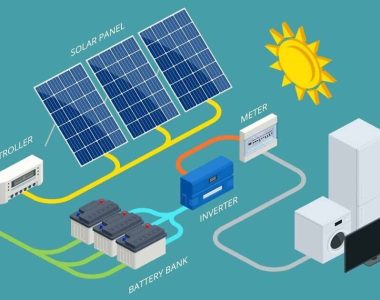
Selecting the right cable brand involves considering various factors to ensure that the chosen cables meet your specific requirements and quality standards. Here are some steps you can take to select a cable brand:
- Define Your Requirements:
- Clearly outline your project requirements, including the type of cable needed, voltage rating, current capacity, insulation type, and environmental conditions (indoor, outdoor, underground, etc.).
- Research and Compare Brands:
- Conduct thorough research on reputable cable brands in the market. Consider factors such as brand reputation, customer reviews, and industry certifications. Look for brands known for quality and reliability.
- Standards and Certifications:
- Ensure that the cable brand adheres to industry standards and holds relevant certifications. Look for products that comply with international or regional standards for safety, performance, and environmental considerations.
- Check Product Range:
- Evaluate the range of products offered by the cable brand. A reputable brand should provide a variety of cables for different applications. This indicates a commitment to quality and versatility.
- Quality Assurance and Testing:
- Inquire about the brand’s quality control processes and testing procedures. A reliable brand should conduct rigorous testing on its cables to ensure they meet or exceed specified standards.
- Supplier Reputation:
- Assess the reputation of the suppliers or distributors associated with the cable brand. A strong distribution network and positive relationships with suppliers can contribute to the availability and timely delivery of products.
- Consider Long-Term Reliability:
- Evaluate the long-term reliability of the cable brand. Consider factors such as the brand’s history in the market, warranty policies, and customer support. A brand with a proven track record is more likely to offer reliable products.
- Cost and Value:
- While cost is a factor, it should not be the sole determinant. Consider the overall value of the cables, including their quality, durability, and the support services provided by the brand.
- Environmental Considerations:
- If your project involves cables in challenging environmental conditions, consider brands that offer cables specifically designed for those conditions, such as cables with enhanced resistance to moisture, chemicals, or extreme temperatures.
- Consultation with Experts:
- Seek advice from electrical engineers, consultants, or professionals who have experience in the specific industry or application. They can provide valuable insights and recommendations based on their expertise.
- Request Samples and Specifications:
- Request samples of the cables you are considering and review detailed specifications. This allows you to physically inspect the product and verify that it meets your project requirements.
Remember that selecting a cable brand is a critical decision that can impact the safety and performance of your electrical system. Take the time to carefully assess your needs, research available options, and choose a reputable brand that aligns with your project requirements and quality standards.
Selecting a power cable brand involves considering several technical parameters to ensure that the chosen cables meet the specific requirements of your application. Here are key technical parameters to check:
- Voltage Rating:
- Ensure that the cable’s voltage rating matches or exceeds the system voltage it will be operating in.
- Current Carrying Capacity:
- Verify that the cable can handle the maximum current load without exceeding its rated ampacity. Consider factors like ambient temperature and cable bundling, as these can affect the current carrying capacity.
- Conductor Material and Size:
- Check the conductor material (copper or aluminum) and size to ensure it meets the conductivity and power transmission requirements of your system.
- Insulation Material:
- Choose an insulation material suitable for the environmental conditions (e.g., PVC, XLPE) and with appropriate electrical properties.
- Armor and Jacketing:
- If required, assess the type and thickness of armor for mechanical protection, and the jacket material for additional environmental resistance.
- Temperature Rating:
- Consider the cable’s temperature rating to ensure it can operate safely within the expected temperature range of your application.
- Flexibility and Bending Radius:
- Evaluate the cable’s flexibility and bending radius to ensure it can be installed without exceeding specified bend radii and without damage to the cable.
- Fire Resistance and Flame Retardance:
- For applications with specific fire safety requirements, check if the cable has fire-resistant or flame-retardant properties.
- Chemical Resistance:
- Assess the cable’s resistance to chemicals if it will be exposed to corrosive environments.
- UV Resistance:
- If the cable will be exposed to sunlight, check for UV-resistant properties to prevent degradation over time.
- Moisture Resistance:
- Ensure that the cable is suitable for the moisture conditions of the installation environment.
- Compliance with Standards:
- Confirm that the cable complies with relevant industry standards and certifications (e.g., IEC, ASTM, UL).
- Cable Type:
- Choose the appropriate cable type based on your application (e.g., power cables, control cables, instrumentation cables).
- Shielding and Grounding:
- For applications sensitive to electromagnetic interference (EMI) or radiofrequency interference (RFI), consider cables with shielding and proper grounding.
- Cable Color and Identification:
- Ensure that the cable is available in suitable colors and has clear markings for easy identification and installation.
- Warranty and Manufacturer Reputation:
- Consider the warranty provided by the manufacturer and assess the reputation of the brand in terms of product reliability and customer support.
- Environmental Considerations:
- If the cable will be installed in a unique or challenging environment, such as underground or in hazardous locations, ensure it is designed for those conditions.

